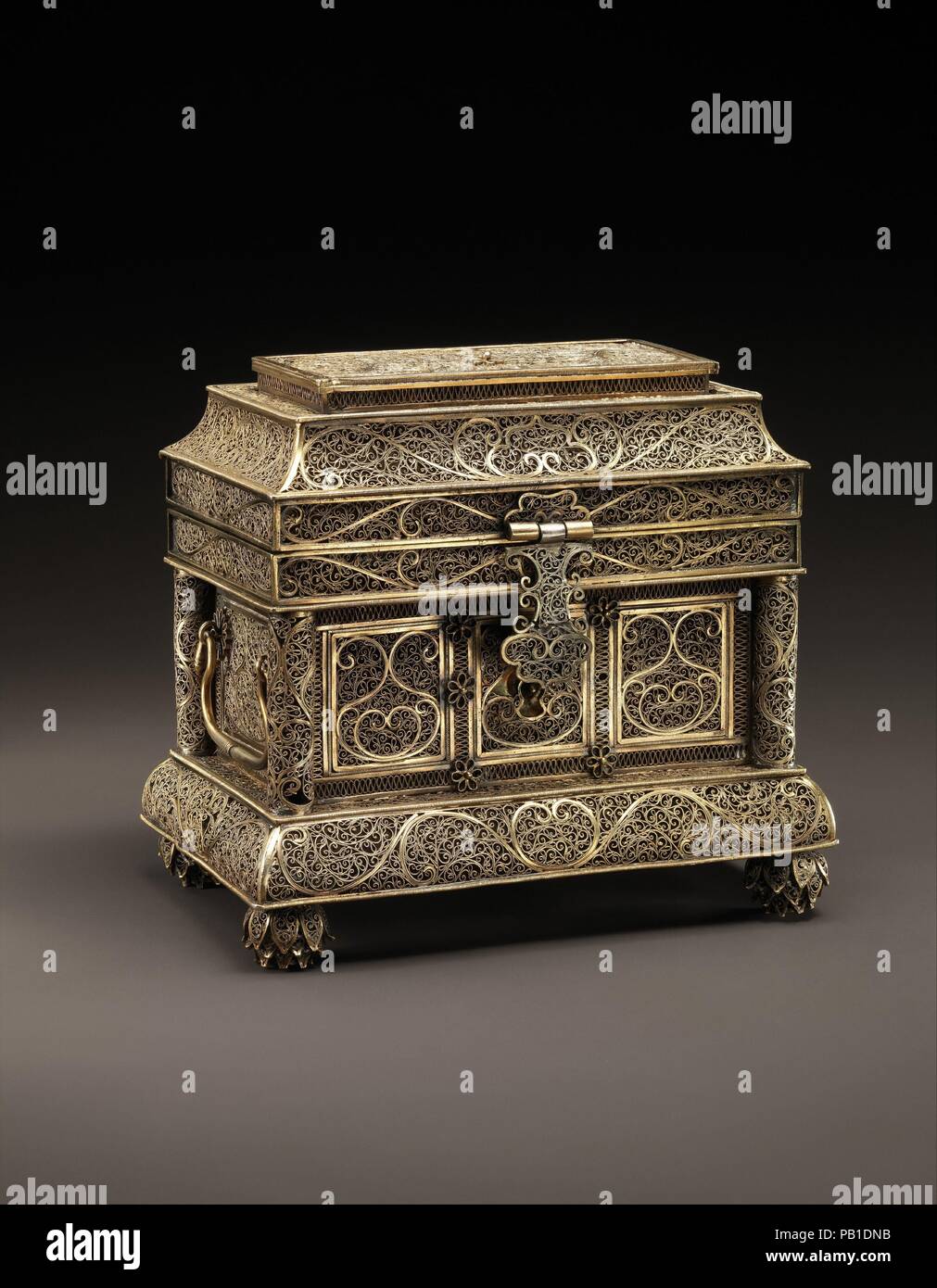Filigree Casket with Sliding Top. Dimensions: H. 5. 1/8 in. (13 cm) W. 5 1/8 in. (13 cm) D. 3 9/16 in. (9 cm). Date: 17th century. While filigree was an established tradition in the Deccan in the middle ages, with the cultural presence of the Portuguese in the 16th century, Deccani craftsmen were exposed to a new wave of objects, which were imported from Europe. Finely drawn wires of gold and silver filigree were shaped into a variety of scrolling forms, including the buta, or flame motif, which even is present on the ornamented interior of this object. The lid of this box contains a sec

Image details
Contributor:
Album / Alamy Stock PhotoImage ID:
PB1DNBFile size:
40.5 MB (2.1 MB Compressed download)Releases:
Model - no | Property - noDo I need a release?Dimensions:
3319 x 4266 px | 28.1 x 36.1 cm | 11.1 x 14.2 inches | 300dpiPhotographer:
AlbumMore information:
This image could have imperfections as it’s either historical or reportage.
Filigree Casket with Sliding Top. Dimensions: H. 5. 1/8 in. (13 cm) W. 5 1/8 in. (13 cm) D. 3 9/16 in. (9 cm). Date: 17th century. While filigree was an established tradition in the Deccan in the middle ages, with the cultural presence of the Portuguese in the 16th century, Deccani craftsmen were exposed to a new wave of objects, which were imported from Europe. Finely drawn wires of gold and silver filigree were shaped into a variety of scrolling forms, including the buta, or flame motif, which even is present on the ornamented interior of this object. The lid of this box contains a secret compartment which slides open to hide a prized object, possibly the key. Museum: Metropolitan Museum of Art, New York, USA.